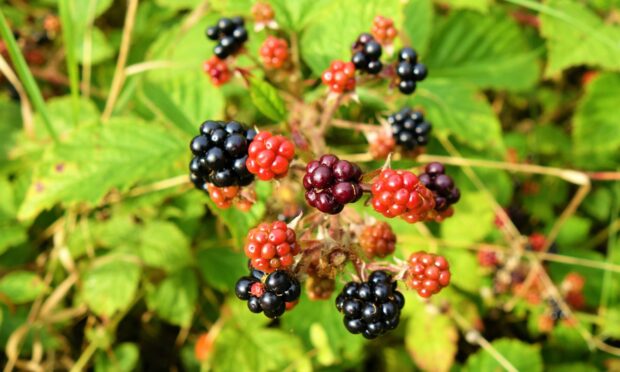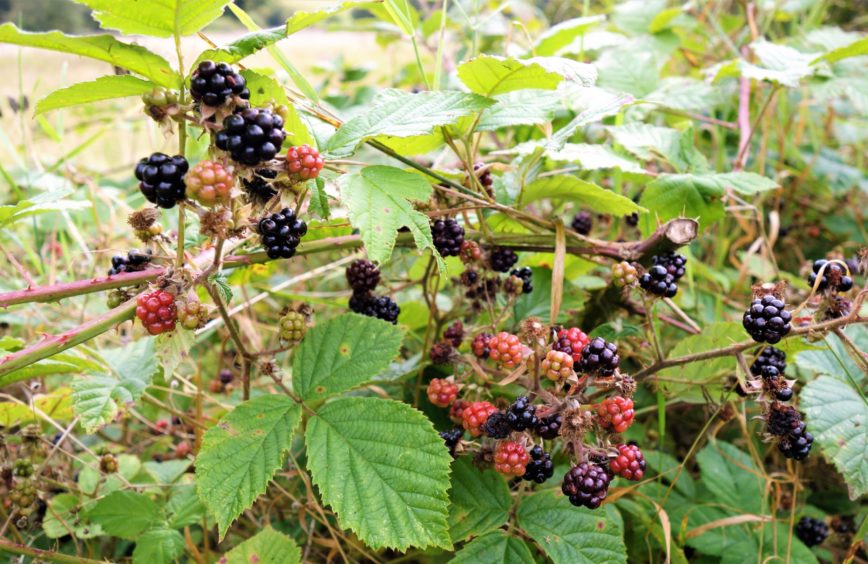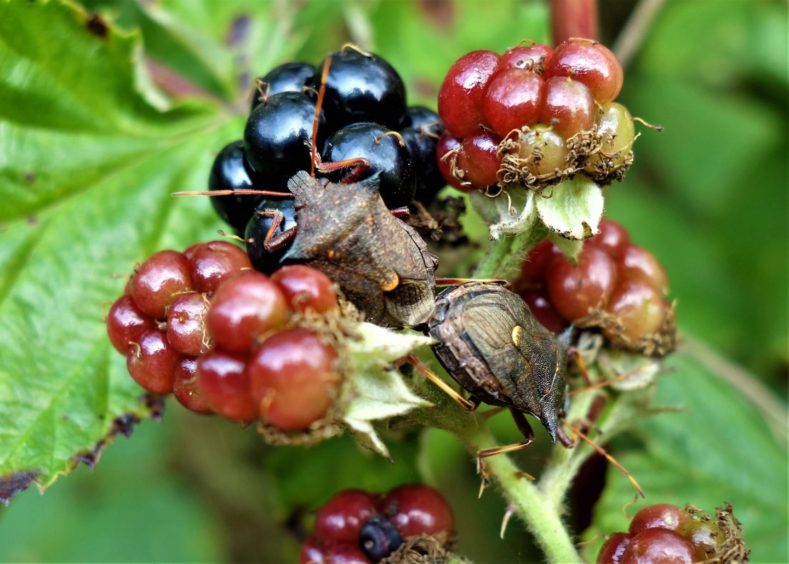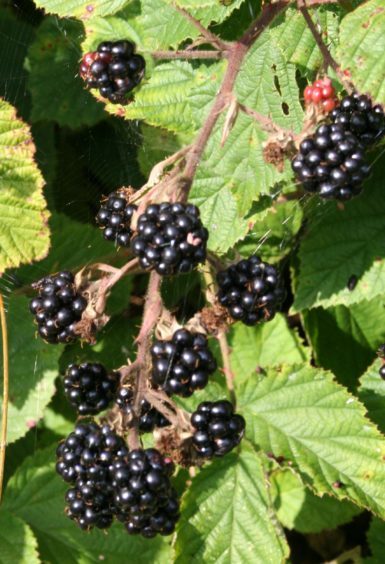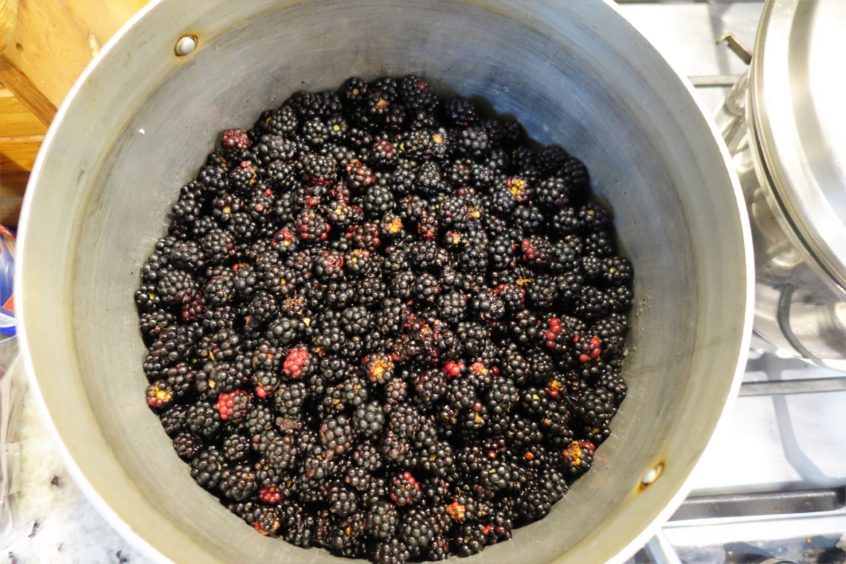Like shining, ebony jewels, the sweet brambles shone out in a glistening cluster by the path edge, and I reached carefully between their prickly stems to pick a handful with my purple-stained fingertips.
These bramble bushes were fickle, some only holding a paucity of fruit or with such small berries that they were hardly worth picking, but others hanging so heavy with autumn’s harvest that I was able to quickly fill my collection container.
Brambling is a strangely relaxing experience, a connection with nature that has become all too easily lost in these modern times, and my mind drifted in quiet contemplation as I became part of the environment around me.
A robin warbled its soft autumnal song and a hawker dragonfly swooped low overhead in its hunt for small flying insects.
Mating shieldbugs
By one bramble cluster, a pair of mating spiked shieldbugs caught my eye, the tips of their abdomens locked together in the act of procreation.
Shieldbugs are fascinating insects, so named because their flattened, almost triangular carapaces do indeed resemble a shield.
Shieldbugs are sometimes known as ‘stinkbugs’ due to the smelly liquid they excrete to put off hungry predators.
But this couple were so engrossed in the act of mating, I don’t think they would have noticed an approaching predator.
I left the shieldbugs in peace, and wandered further down the track, popping another sweet-tasting bramble into my mouth, enjoying the richness of nature’s wild harvest.
These berries will provide welcome sustenance for wood mice, bank voles, and blackbirds as they fatten-up in preparation for winter.
Foxes and pine martens also eagerly devour them, and their droppings at this time of year are glossed black from the glut of fruit they have consumed.
Reflections
The berry picking provided ample opportunity for reflection of the importance of bramble bushes in nature.
Not only do they provide fruit in autumn and sweet nectar for insects from their flowers in spring and early summer, but their protective prickly cover also provides crucial nesting places for birds such as thrushes and whitethroats.
Wood mice often use old blackbird nests as feeding platforms in which to devour brambles, and I recall once inadvertently disturbing one, which shot out of the nest in a blurry-brown blur to seek shelter on the ground.
On returning home with my full containers, I set about making bramble jelly following a recipe in a recent issue of The Courier’s Menu supplement.
The pot boiled and sweet vapours filled the kitchen.
The first trial test to see if the jelly might set didn’t work, the purple liquid running off a cooled plate.
So, the pan went back onto the simmer for another 10 minutes.
This time it set perfectly, and now I have three precious jars of bramble jelly in my store cupboard; a vinous autumn bounty with an intensity of flavour that makes my taste buds tingle with sheer delight.
INFO
The bramble is a complex plant and more than 400 microspecies have been recorded in Britain, the berries of each one often differing slightly in their size and taste, as well as fruiting time.
